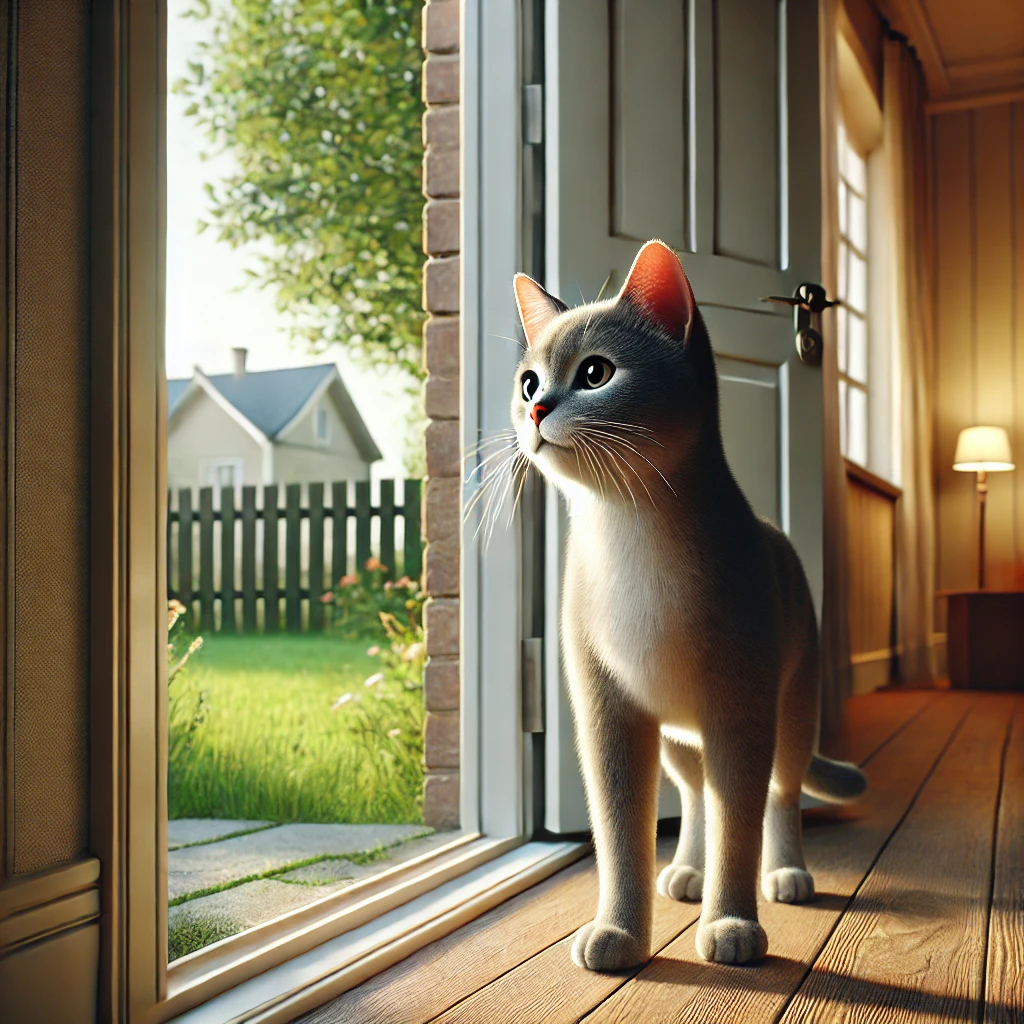The Importance of Understanding Cat Behavior
Have you ever found yourself staring into the deep, mysterious eyes of your feline friend, wondering what they’re thinking? Or perhaps you’ve been awakened by a series of urgent meows in the wee hours of the morning and pondered their meaning.
Why is understanding your cat so important? Well, scientists have found that understanding animal behavior is crucial for many reasons. For example, a study 1showed that knowing how animals behave can help us figure out how they interact with other species. Just like we learn to understand our friends better by watching what they do, we can get to know our cats better by observing their actions.
The Basics: What Every Cat Owner Should Know
Cats, with their enigmatic behaviors and vocalizations, often leave us cat parents scratching our heads in confusion. But fear not! This guide is here to help you decode the intricate language of the domestic cat, allowing you to understand and connect with your furry companion on a deeper level.
Understanding cat behavior is more than just a fun exercise in curiosity. It’s about building a stronger bond with your pet, ensuring their well-being, and creating a harmonious living environment. By learning to ‘speak cat language’ you’re taking a step towards a happier, healthier relationship with your furry friend.
What Constitutes Normal Cat Behavior?
By watching one animal, we can learn about others too. A cool book 2I read says that the behavior of one animal can give clues about others. So, by understanding our cats, we might even learn about big wild cats like lions or tigers!
But let’s set the stage by understanding what’s considered ‘normal’ for a cat. Cats, like humans, have a range of personalities and behaviors. Some are outgoing and playful, while others are more reserved and introspective.
However, there are certain universal behaviors that most cats exhibit:
- Sleeping: Cats are notorious for their love of sleep, often dozing off for up to 16 hours a day. This is entirely normal and a throwback to their wild ancestors who needed to conserve energy for hunting.
- Grooming: Regular self-grooming helps cats keep clean, regulate their body temperature, and relax. If your cat is grooming, it’s a sign they’re feeling content and secure.
- Hunting and Playing: Even domesticated cats retain their hunting instincts. They’ll often “hunt” toys, shadows, or even your fingers, practicing their pouncing and stalking skills.
Key Behaviors To Consider When Decoding Cat Behavior
While the above behaviors are standard, cats also have unique ways of communicating their feelings and needs.
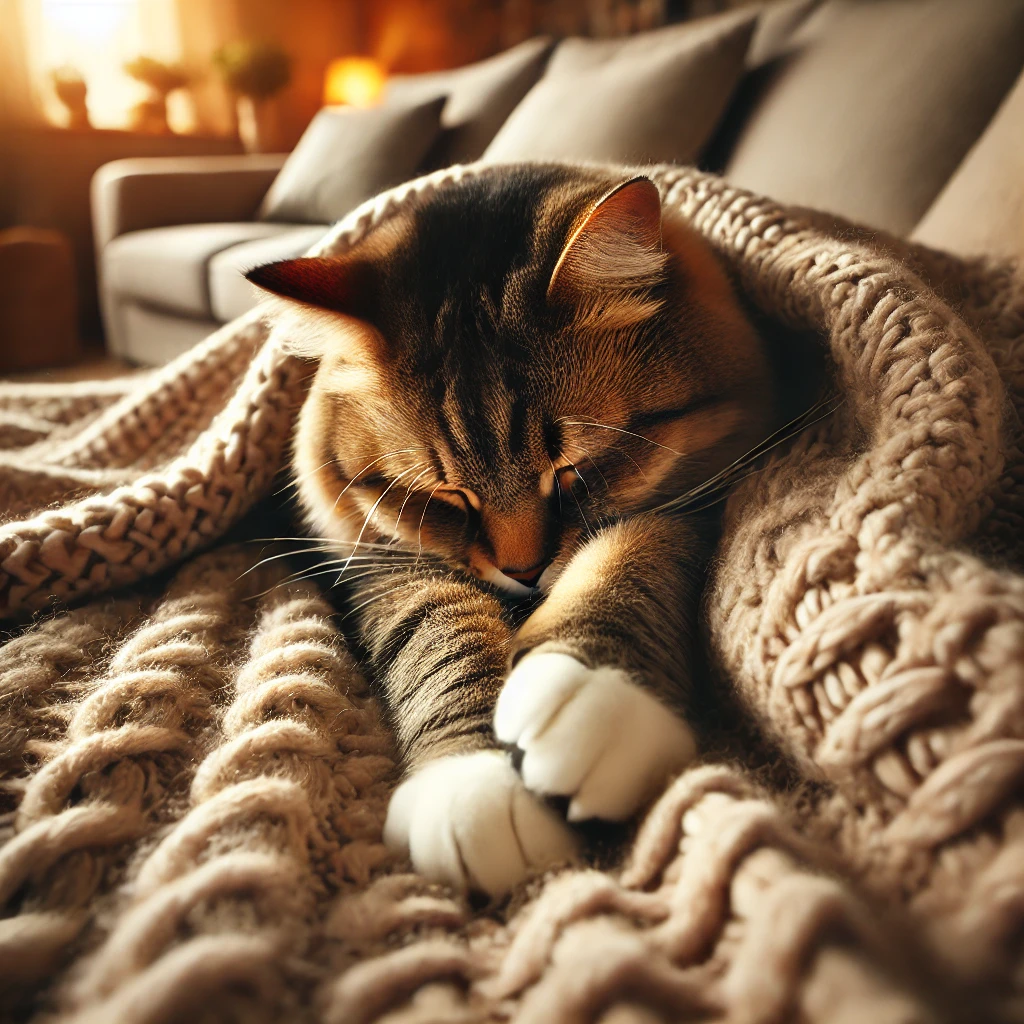
These key behaviors can be subtle, so it’s essential to pay close attention:
- Kneading: When your cat pushes their paws in and out against a soft surface, it’s a comforting behavior that dates back to kitten hood.
- Scratching: Cats scratch to mark their territory, sharpen their claws, and stretch their bodies. It’s a natural behavior, though it’s a good idea to provide scratching posts to save your furniture!
- Hiding: If your cat is feeling stressed or unwell, they might seek out quiet, dark places to hide. It’s essential to give them space but also monitor their well-being.
Katherine, from Manchester, was at her wit’s end. Her cat, Calypso, had taken a liking to scratching her brand-new leather sofa. No amount of scolding seemed to deter Calypso. But then, a fellow cat owner suggested she try a specific type of scratching post infused with catnip.
Katherine was skeptical but gave it a shot. To her amazement, Calypso was instantly drawn to the new post and left the sofa alone. It turned out that Calypso preferred the texture of the new post and the catnip was an added bonus. Katherine’s sofa was saved, and Calypso had a new favorite spot!
Vocalizations: Understanding the Sounds Cats Make
Cats are not as vocally expressive as, say, dogs, but they still have a rich vocabulary of sounds that convey various emotions and messages.
The Secrets of Purring, Meowing, and Chirping:
- Purring: Most often, purring is a sign of contentment. However, cats also purr when they’re in pain or anxious. It’s crucial to consider the context in which they’re purring to understand its meaning.
- Meowing: Cats primarily meow to communicate with humans, not other cats. The tone, pitch, and frequency can indicate everything from hunger to a desire for attention or even annoyance.
- Chirping: This sound is a mix between a meow and a purr and is often directed at things they can’t reach, like birds outside the window.
- Bird-Watching Chirps: When your cat sits by the window, staring intently at birds and making that unique chirping sound, they’re expressing their hunting instincts. In the wild, this sound might be used to mimic bird calls or express frustration at not being able to catch their prey.
- Chirping Indoors: If your cat chirps indoors, especially when playing with toys, they’re likely expressing excitement and hunting enthusiasm. It’s their way of saying, “I’ve got my eye on the prize!” Sometimes they can do this when they feel stuck/bored and want to get out of the house.
By understanding these fundamental behaviors and vocalizations, you’re well on your way to decoding the mysterious world of cats. As you continue to observe and interact with your feline friend, you’ll discover the unique quirks and characteristics that make them so special.
Cat Body Language: How Cats Communicate Through Movements
While cats might not “speak” in the traditional sense, their bodies are constantly telling us stories. From the tip of their tail to the position of their ears, every movement and posture is a form of communication. Let’s dive into the world of cat body language to better understand our furry companions.
Cats might seem mysterious, but they have rich social lives. A research article 3I found dives into how cats communicate and form bonds. By understanding these social cues, as cat lovers we can better appreciate and connect with our feline companions.
The Meaning Behind Intense Cat Stares
Ever felt like your cat is trying to communicate something profound with just a stare? You’re not wrong.
An intense, prolonged stare from a cat can mean several things:
- Curiosity: Your cat might be intrigued by something you’re doing or an object they haven’t seen before.
- Challenge: In the feline world, maintaining eye contact is a sign of dominance. If a cat stares at another cat without breaking eye contact, it can be seen as a challenge or threat.
- Affection: Sometimes, a soft, slow blink following a stare is a cat’s way of saying “I love you” or “I trust you.”
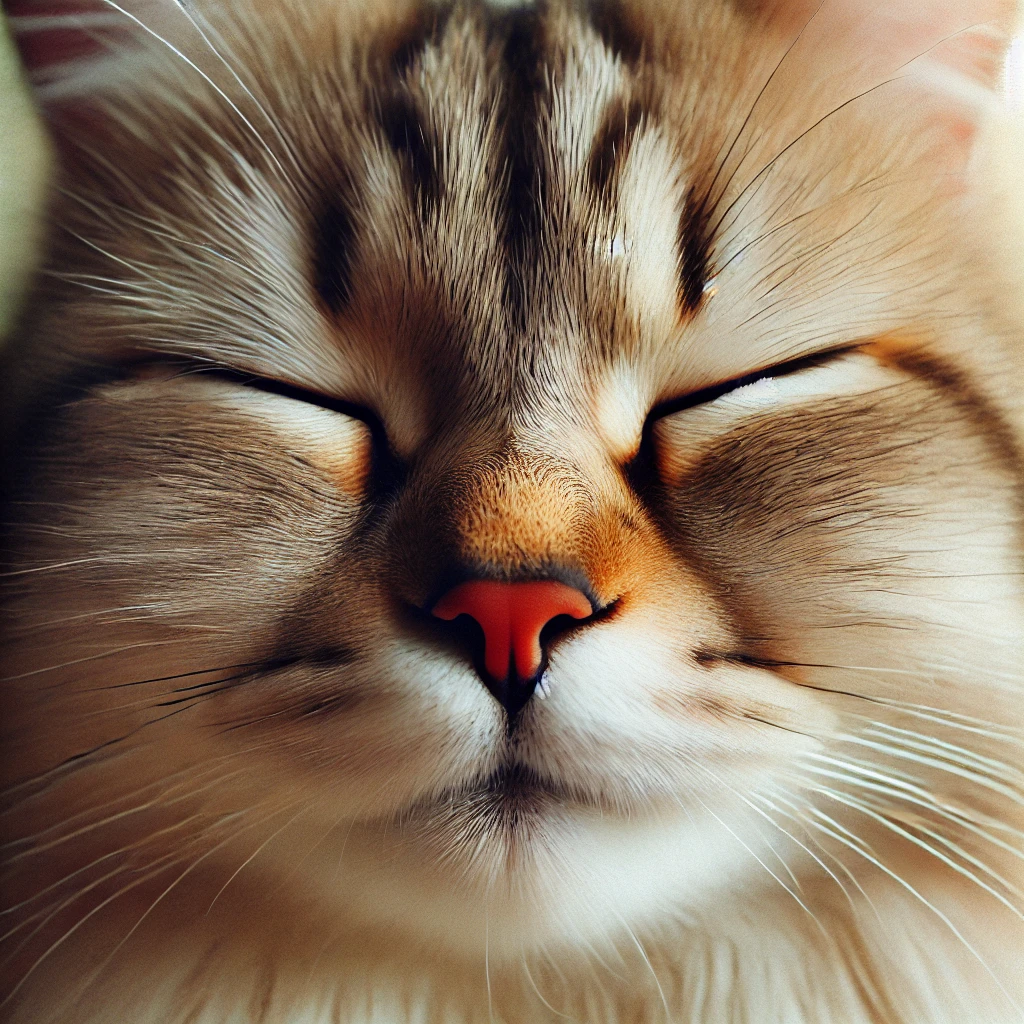
Decoding Cat Communication Through Eyes and Tail
Cats use both their eyes and tails to convey a wide range of emotions:
- Eyes: Dilated pupils can indicate excitement, fear, or playfulness. Conversely, narrowed eyes can be a sign of contentment or, in some cases, aggression.
- Tail: A raised tail usually means a confident, happy cat, while a tucked tail can indicate fear or submission.
I met a guy in Vietnam, Martin from New York, who noticed that whenever he returned home from work, his cat, Tommy, would greet him with an upright, quivering tail. After some research, he learned that this was Tommy’s way of expressing extreme excitement.
The tail is one of the most expressive parts of a cat’s body.
Here’s a quick guide to tail talk:
- Upright And Quivering: This can be a sign of extreme excitement or, in some cases, involved in marking territory.
- Flicking Or Lashing: This usually indicates irritation or agitation. If your cat’s tail is thrashing, it’s best to give them some space.
- Puffed Up: A puffed-up tail, often accompanied by an arched back, is a sign of a frightened or startled cat.
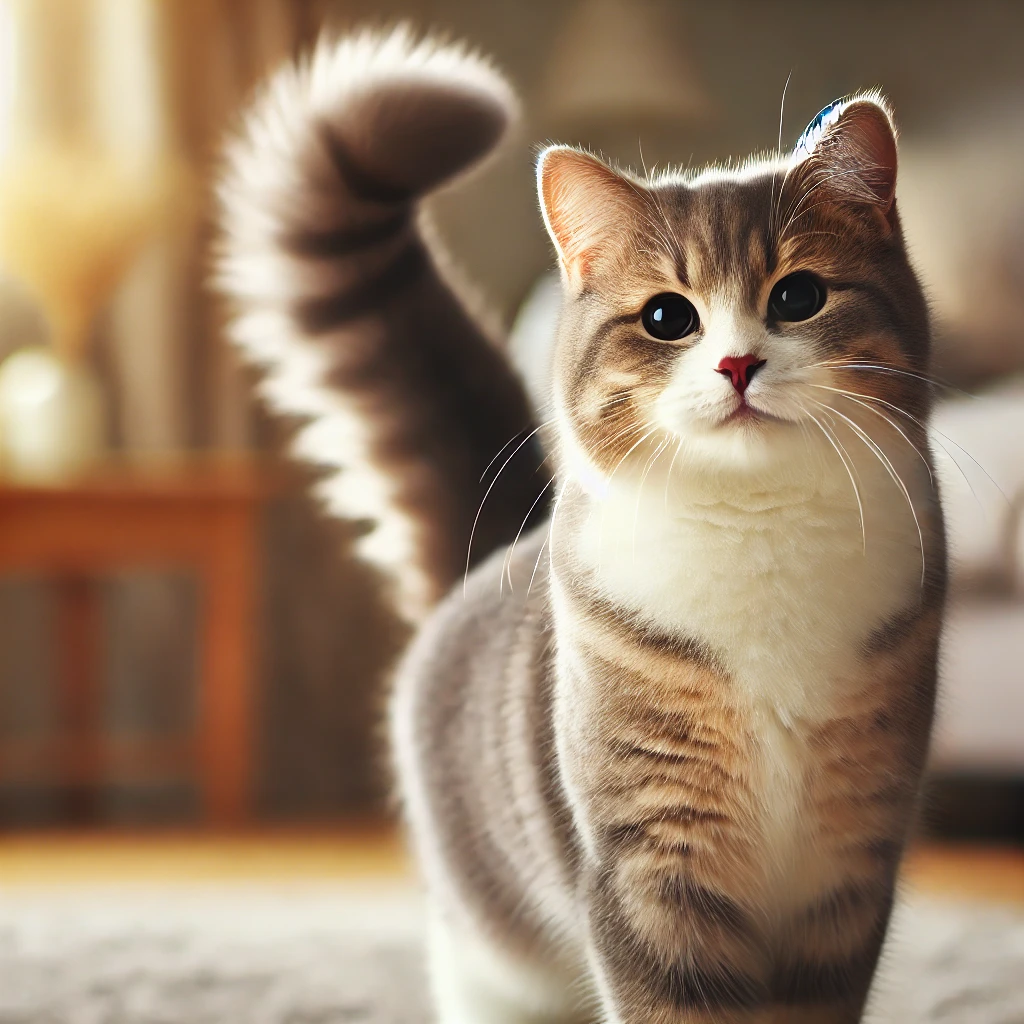
Trust Signals: When a Cat Rolls Over and Shows Its Belly
One of the most endearing and significant signs of trust from a cat is when they roll over and expose their belly. The belly is a vulnerable area, so when a cat shows it to you, they’re saying they feel safe and trust you completely. However, be cautious: not every cat likes belly rubs, even if they show you their tummy!
Warning Signs: What It Means When a Cat’s Ears Are Folded Back
A cat’s ears are like a mood ring. When they’re perked up and forward, they’re interested and alert. However, ears folded flat against the head are a clear warning sign. This posture indicates fear, aggression, or irritation. If you see this, it’s a clear signal to back off and give your cat some space.
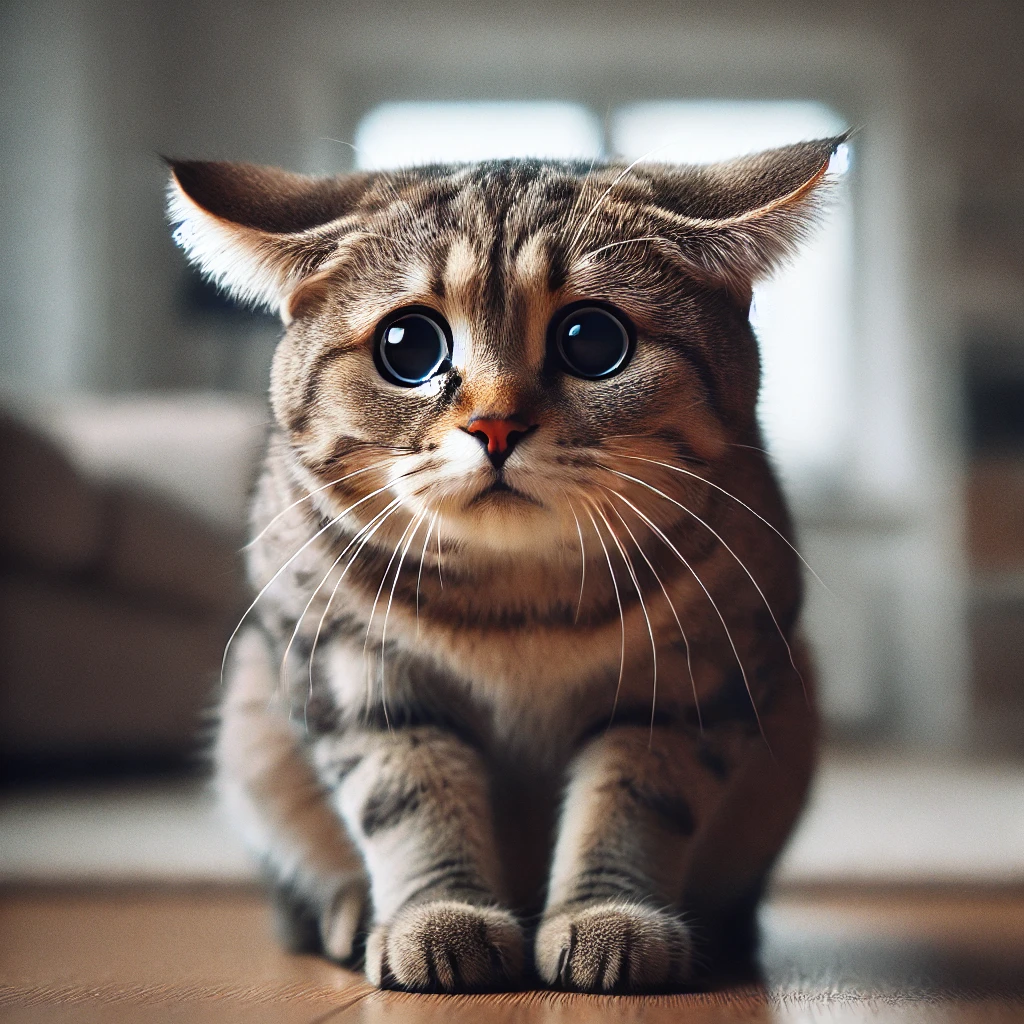
By paying close attention to these subtle (and sometimes not-so-subtle) cues about our cats body language, we can better understand our cats’ feelings, needs, and moods. This understanding fosters a deeper bond and ensures that we’re meeting our feline friends’ emotional and physical needs.
Still wondering why cats do the things they do? From the way they move their tails to the tilt of their ears, every action has a meaning. This article 4breaks down the various behaviors of cats, helping us decode their mysterious ways.
Expressions of Affection: How Cats Show Love
Cats have their own special ways of showing love, and scientists think it’s super important to understand them. A research article 5I came across talks about how studying animal behavior is linked to their well-being. So, when we understand why our cats knead or purr, we’re also able to ensure they’re happy and healthy by using our newfound knowledge.
Cats have a reputation for being aloof and independent creatures, but any cat owner will tell you that they’re also incredibly affectionate and loving. They just have their own unique ways of showing it. Let’s dive into some of the most common expressions of feline affection.
Kneading, Licking, and Speaking the Language of Cat Affection
- Kneading: When your cat kneads you with their paws, it’s one of the highest compliments they can give. As touched on earlier, this behavior dates back to kitten hood when they would knead their mother’s belly to stimulate milk flow. Adult cats knead when they’re feeling especially relaxed and content.
- Licking: If your cat licks you, it’s their way of grooming you and marking you as part of their “family.” It’s a sign of trust and affection. Plus, it’s their way of saying, “You’re mine.”
- Head-Butting: A gentle nudge or headbutt is another way cats show affection. They have scent glands on their heads, so when they rub against you, they’re marking you as their territory and expressing their love.
When Your Cat Rubs Its Face on Objects: Understanding This Gesture
Cats have multiple scent glands on their faces, especially around their cheeks, chin, and forehead. When they rub their face against objects (or you!) they’re marking it with their scent.
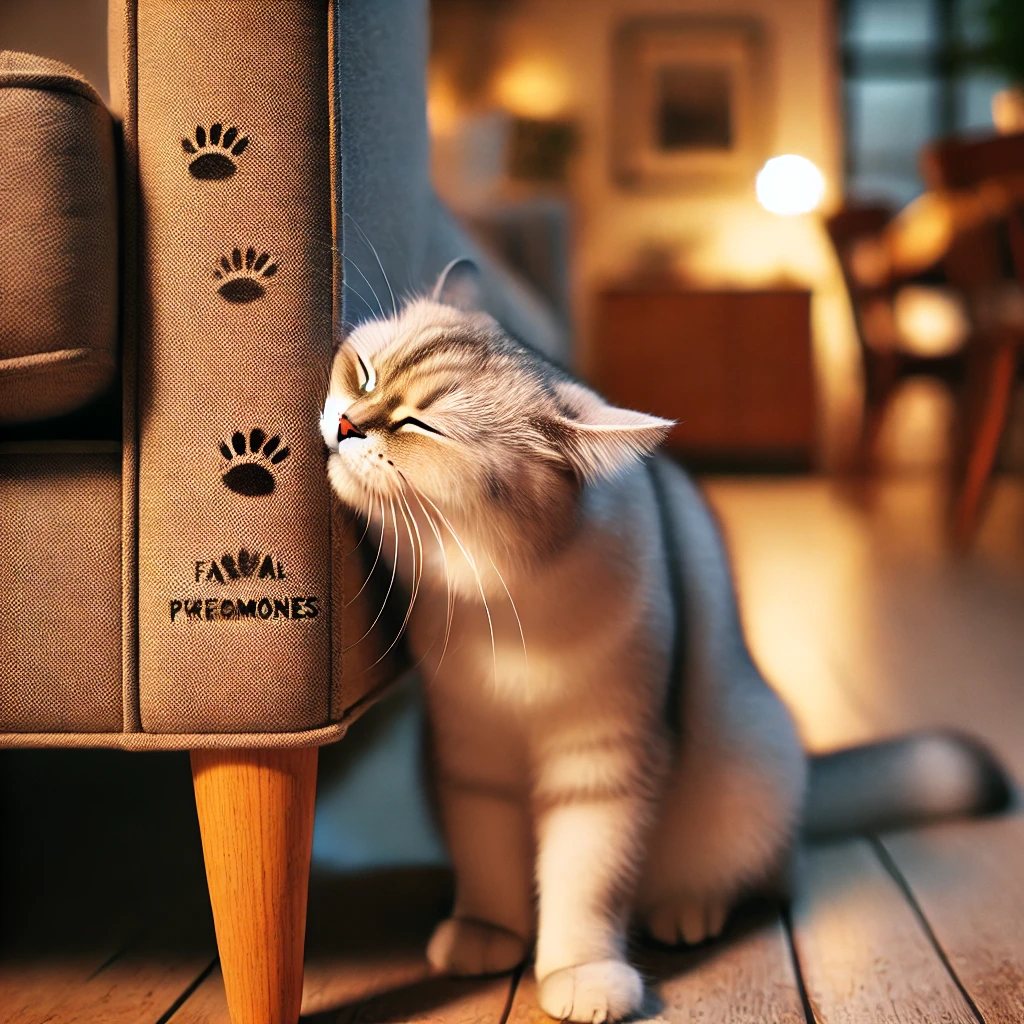
This behavior is a way for cats to claim their territory and make their environment feel more familiar and comforting. So, the next time your cat rubs its face against your leg or a piece of furniture, know that they’re saying, “This is mine, and I feel safe here.”
Energetic Behaviors: Understanding Why Cats Get the Zoomies and Play
Ever watched in amusement as your cat suddenly dashes around the house like a bolt of lightning? This burst of energy, often referred to as the “zoomies,” is entirely normal.
Cats are crepuscular, which means they’re most active during the dawn and dusk. These zoomies help them burn off excess energy, practice their hunting skills, and keep their reflexes sharp. Play is essential for cats, both for their physical health and mental stimulation. So, the next time your cat gets the zoomies, grab a toy and join in the fun!
Morning Routines: Deciphering Early Morning Cat Behavior
Ah, the early morning hours, when the world is still quiet, and the sun is just beginning to rise.

For many cat owners, this peaceful time is often interrupted by a furry friend with their own set of morning rituals. Whether it’s a hunger call or a playful pounce, understanding your cat’s morning behavior can help you navigate and appreciate these dawn-time antics.
Hunger Calls: When They Wake You Up for Food
One of the most common early morning behaviors cat owners experience is the hunger call. This can range from gentle meowing to more insistent cries or even a paw to the face. Cats have internal clocks that are finely tuned to their feeding schedules. If you feed them at the same time every morning, they’ll quickly learn when it’s time to eat and remind you if you’re even a minute late.
Playtime Requests: Morning Attention-Seeking in Cats
Maria, a cat owner from Bulgaria, contacted me through the website and shared how her cat, Luna, would meow loudly every morning at 5 am. Initially, she thought Luna was hungry. But after observing her for a few days, she realized Luna was signaling her playtime mood, asking for her favorite toy.
Apart from hunger, your cat might wake you up because they’re in the mood for some playtime. After a long night’s rest, they have built up energy to burn. A quick play session with a toy or laser pointer can help satisfy this urge and give you a few more moments of rest before starting your day.
Sleep Patterns: Understanding Day and Night Behavior in Cats
While cats do sleep a lot—up to 16 hours a day—they don’t sleep in long, uninterrupted stretches like humans. Instead, they nap throughout the day and night, with periods of activity in between. This is why, even after a playful morning, they might go back to snoozing once the sun is fully up.
Kittens vs. Adult Cats: Differences in Morning Cat Behavior
Kittens and adult cats have different energy levels and needs, which can influence their morning routines.
- Kittens: Bursting with energy, kittens are often more active in the early morning hours. Their playful antics and curiosity can start well before the sun rises.
- Adult Cats: While they still enjoy playtime, adult cats might be more focused on their morning meal. They may also have more established routines and be less unpredictable than kittens.
Understanding your cat’s morning behavior is all about recognizing their natural instincts and rhythms. By tuning into their needs and patterns, you can create a morning routine that works for both of you, ensuring a harmonious start to the day.
Litter Box Insights: Decoding Issues and Preferences
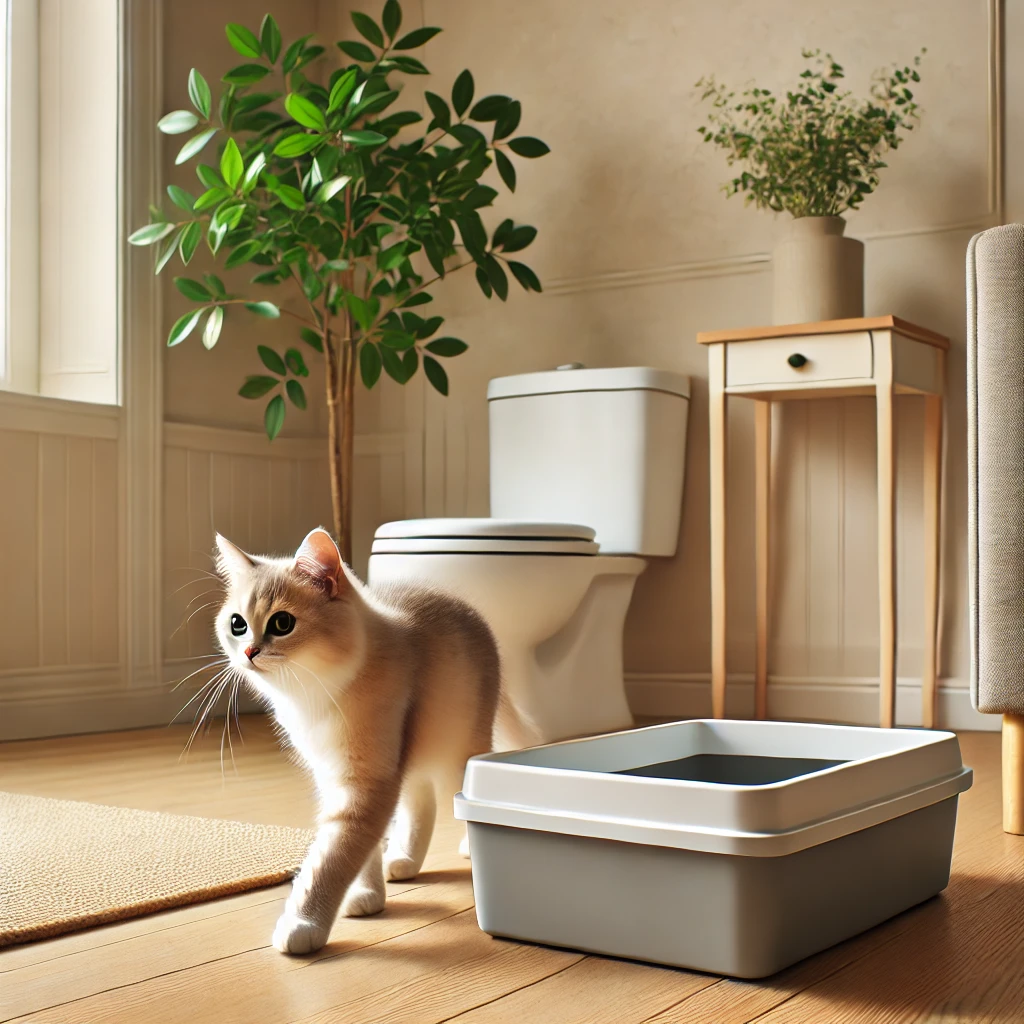
The litter box: a simple container that holds a wealth of information about your cat’s health and well-being. While it might not be the most glamorous topic, understanding your cat’s litter box behavior can provide crucial insights into their overall health and happiness. Let’s delve into the world of litter box insights and decode some common issues and preferences.
Decoding Litter Box Issues: Why Cats Pee and Poop Outside Their Box
It can be frustrating and concerning when a cat chooses to eliminate outside their litter box. This behavior is not just a random act of rebellion; it’s often a sign that something isn’t right.
Some common reasons include:
- Medical Issues: Urinary tract infections, bladder stones, or other health problems can make it painful for a cat to urinate, leading them to associate the litter box with pain.
- Dirty Litter Box: Cats are meticulous creatures, and a dirty litter box can be a big turn-off for them. It’s essential to scoop the box daily and change the litter regularly. A clean box not only encourages proper litter box habits but also helps you monitor for any changes in your cat’s elimination, which can be crucial for catching health issues early.
- Box Location: Cats prefer a quiet, accessible location for their litter box. It should be away from their food and water and in a place where they won’t be startled or interrupted. For multi-cat households, having multiple boxes in different locations can help prevent territorial disputes.
Understanding and addressing litter box issues and preferences is essential for a happy, healthy cat. By paying attention to unwanted behaviors and making necessary adjustments, you can ensure that your feline friend feels comfortable and secure in their environment.
Medical Insights: Health Issues from Litter Box Behavior
Changes in litter box behavior can be the first sign of medical issues.
For instance:
- Frequent Urination: This could indicate a urinary tract infection or diabetes.
- Blood In Urine: This is a clear sign of a medical issue, possibly a urinary tract infection or bladder stones, and requires immediate veterinary attention.
- Constipation Or Diarrhea: Changes in stool consistency can indicate digestive issues or other health problems.
Behavioral Insights: When Cats Avoid the Litter Box
Sometimes, the reasons cats avoid the litter box are behavioral rather than medical. We might have to take the cat care up a notch and get some expert advice for certain situations.
For example:
- Stress And Anxiety: Changes in the household, like a new pet or family member, can stress a cat out and affect their litter box habits.
- Negative Associations: If a cat has been startled or disturbed while using the box, they might develop a negative association with it.
- Preference: Cats can be picky about the type of litter, the style of the box, or even the depth of the litter.
Territory Marking: Why Cats Spray
Spraying is a way for cats to mark their territory. It’s a behavior more commonly seen in unneutered males but can occur in any cat. Spraying can be triggered by multiple factors, including territorial disputes, stress, or even medical issues.
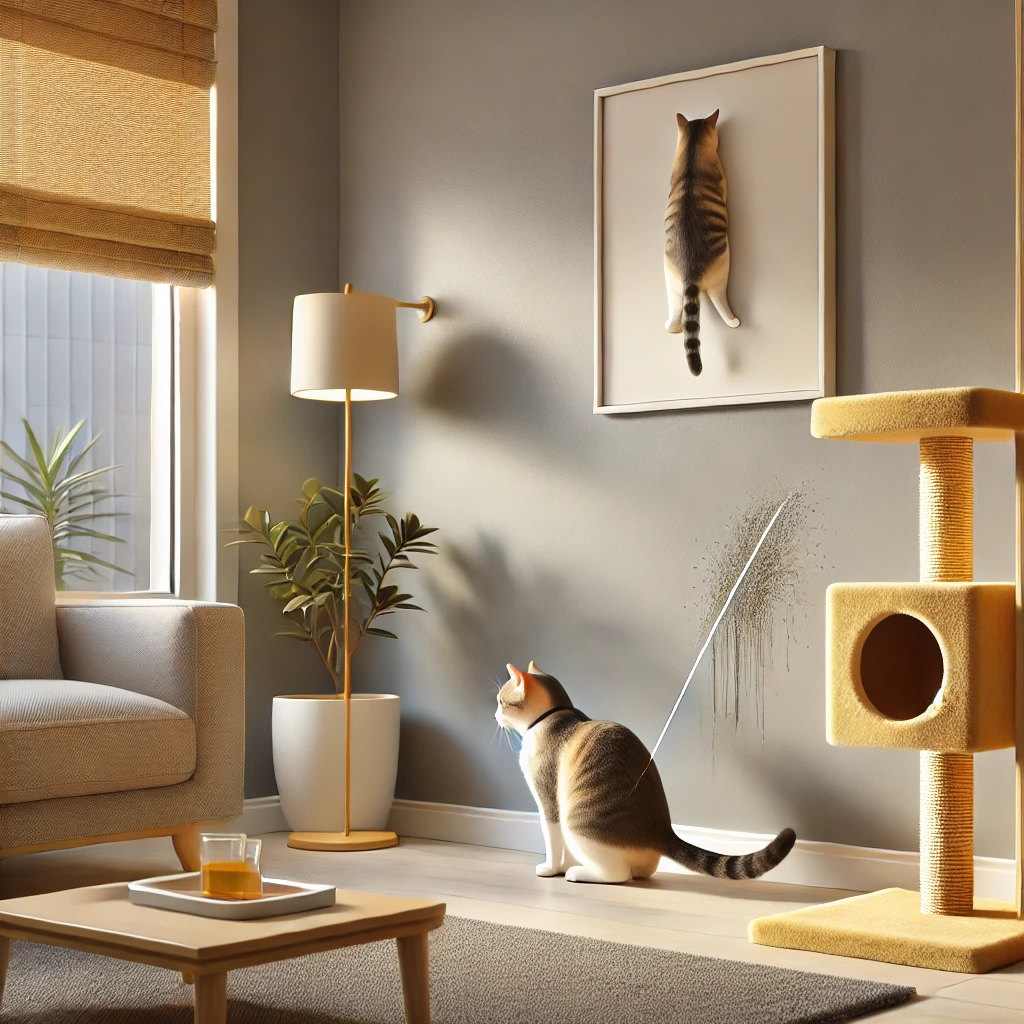
The Mystery of Cats Knocking Things Over
Ah, the age-old question: Why do cats seem to have an irresistible urge to knock things over? Let’s unravel this feline mystery.
My friend Jess from Atlanta always wondered why her cat, George, seemed to have an obsession with knocking stuff purposefully off tables and shelves. One day, we caught George in the act and realized that the reflection from a vase resembled moving prey, triggering George’s hunting instincts.
Boredom or Curiosity? Why Cats Push Objects
Cats are naturally curious creatures. When they bat at an object, and it moves, it can be fascinating for them. Sometimes, they’re testing the object out of sheer curiosity, and other times, they might be bored and looking for a way to entertain themselves.
The Hunter’s Instinct: Interpreting When They Knock Things Over
The act of batting at objects also ties back to a cat’s hunting instincts. In the wild, a cat would paw at potential prey to check for signs of life. In a domestic setting, that “prey” might be a pen on a table or a glass on a shelf.
Encouraging or Discouraging? Our Role in This Cat Behavior
As cat owners, we play a role in this behavior too. If we react strongly (whether with laughter or annoyance) when our cat knocks something over, they might learn to do it more often to get our attention.
If you want to discourage this behavior, it’s essential to provide alternative forms of entertainment, like toys or interactive play sessions. And remember, always keep breakables out of paw’s reach!

Understanding these behaviors helps us appreciate the depth of emotion and intelligence in our feline friends. By recognizing and responding to their unique ways of expressing love, playfulness, and curiosity, we can strengthen our bond with them and ensure a happy coexistence.
Common Misconceptions about Cat Behavior
Cats, with their enigmatic personalities, have been the subject of numerous myths and misconceptions.
Let’s debunk some of the most common ones:
- Cats Are Lone Wolves: While cats are often seen as solitary creatures, many enjoy companionship, whether from humans or other cats. They can form strong bonds and even experience separation anxiety.
- Purring Only Means Contentment: As mentioned earlier, while purring often indicates happiness, cats also purr when they’re in pain, anxious, or even when they’re near death.
- A Cat’s Belly Display Is An Invitation For A Belly Rub: Exposing the belly is a sign of trust. However, not all cats like belly rubs. For some, it’s a vulnerable area, and touching it might result in a swift swipe of their claws.
- Cats Hate Water: While many cats dislike baths, it’s not accurate to say all cats hate water. Some breeds, like the Maine Coon, are known to enjoy playing in water.
- All Cats Are Nocturnal: Cats are often more active during dawn and dusk (crepuscular) rather than strictly nocturnal. Their activity patterns can also be influenced by their environment and routine.
How to Respond to Specific Cat Behaviors
Understanding cat behavior is one thing, but knowing how to respond is equally crucial.
Here are some tips:
- Aggression: If your cat is showing signs of aggression, it’s essential to identify the cause. It could be due to pain, fear, territorial disputes, or even play. Avoid physical punishment as it can make the aggression worse. Instead, provide a safe space for your cat and consider consulting a vet or cat behaviorist.
- Scratching Furniture: As highlighted previously with Calypso’s story, providing alternatives like scratching posts can deter cats from damaging furniture. Infusing them with catnip can incentivize use of the scratching post or using double-sided tape on furniture can also be an effective deterrent.
- Nighttime Activity: If your cat is particularly active at night, try engaging them in play sessions during the evening to tire them out. Ensure their environment is stimulating enough during the day to bring a balance to their activity levels.
- Litter Box Avoidance: Ensure the litter box is clean, placed in a quiet location, and large enough for your cat. If the avoidance continues, consult a vet to rule out potential health issues.
- Biting During Play: If your cat gets a bit too rough during playtime, immediately stop playing and walk away. This teaches them that biting results in the end of fun.
By responding appropriately to these unwanted behaviors, not only do you ensure your cat’s well-being, but you also foster a deeper, more harmonious relationship with your feline friend.
In Conclusion: The Enigmatic World of Feline Behavior
Cats, with their intricate behaviors and unique personalities, have always been a source of wonder and fascination. From the depths of their vocalizations to the subtle nuances of cat body language, understanding our feline companions is a journey of discovery.
We’ve delved into the importance of recognizing normal cat behaviors, the significance of vocal cues, the stories told through their movements, and the myths that often surround these majestic creatures. By understanding and respecting their individual quirks and needs, we not only ensure their well-being but also deepen the bond we share with them.

So, the next time your cat gazes into your eyes, chirps at a bird, or simply curls up beside you, remember that you’re privy to a language that’s as ancient as it is profound. Let’s cherish these moments, learn from them, and continue our journey into the heart of the feline world.
Take a moment today to observe your cat, to truly see them. Which new behavior are you planning to decipher? What new story will they tell? And most importantly, how will you respond to their silent call for understanding and love?
Have you ever had a moment where understanding your cat’s behavior changed the way you interacted with them? Share your stories and join the conversation.
Bibliography
- Holway, D. A., & Suarez, A. V. (1999). Animal behavior: an essential component of invasion biology. Trends in ecology & evolution, 14(8), 328-330.e ↩︎
- Martins, E. P. (Ed.). (1996). Phylogenies and the comparative method in animal behavior. Oxford University Press, USA. ↩︎
- Atkinson, T. Cat Communication. ↩︎
- https://www.how.com.vn/wiki/en/Cat_behavior ↩︎
- Gonyou, H. W. (1994). Why the study of animal behavior is associated with the animal welfare issue. Journal of animal science, 72(8), 2171-2177. ↩︎


